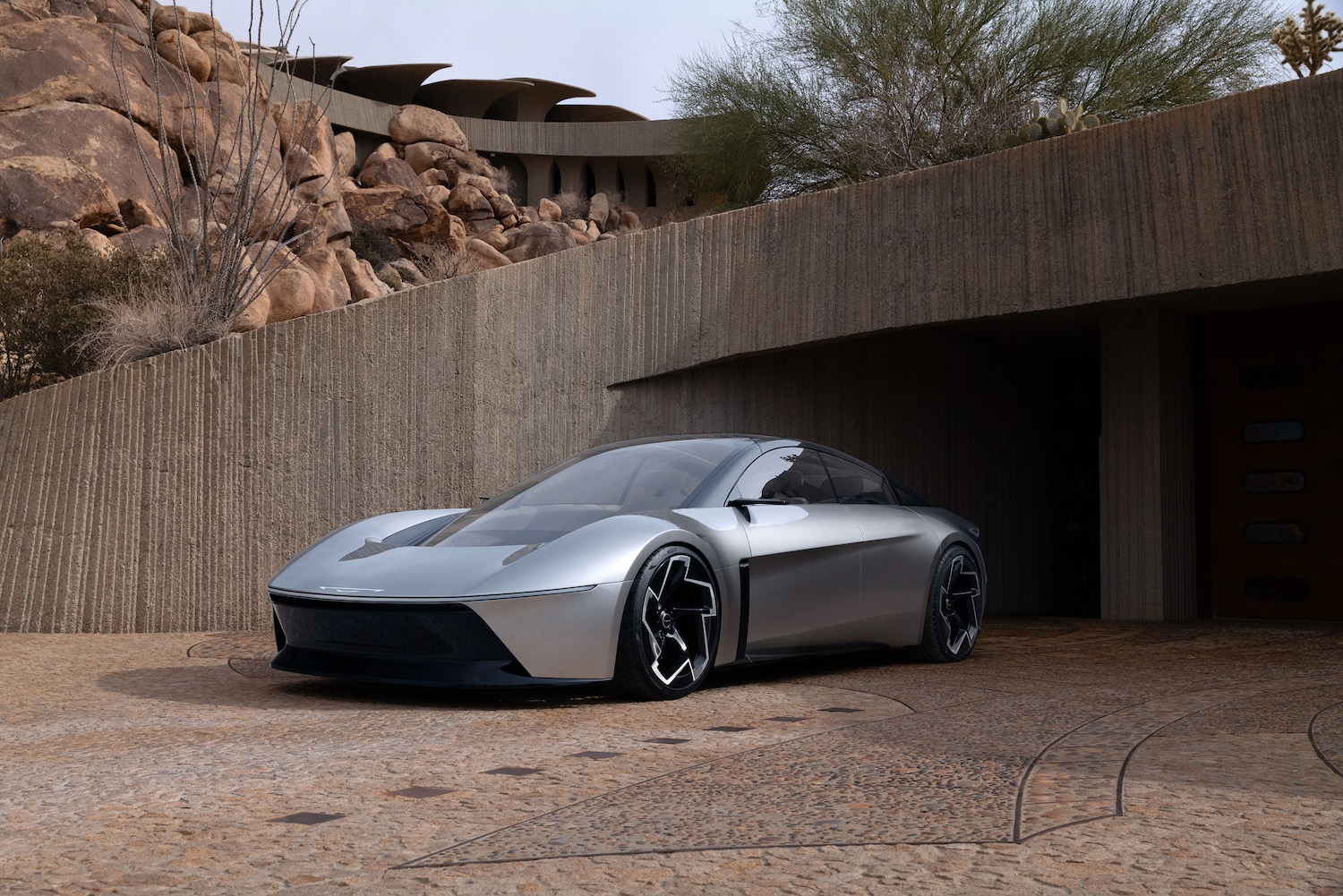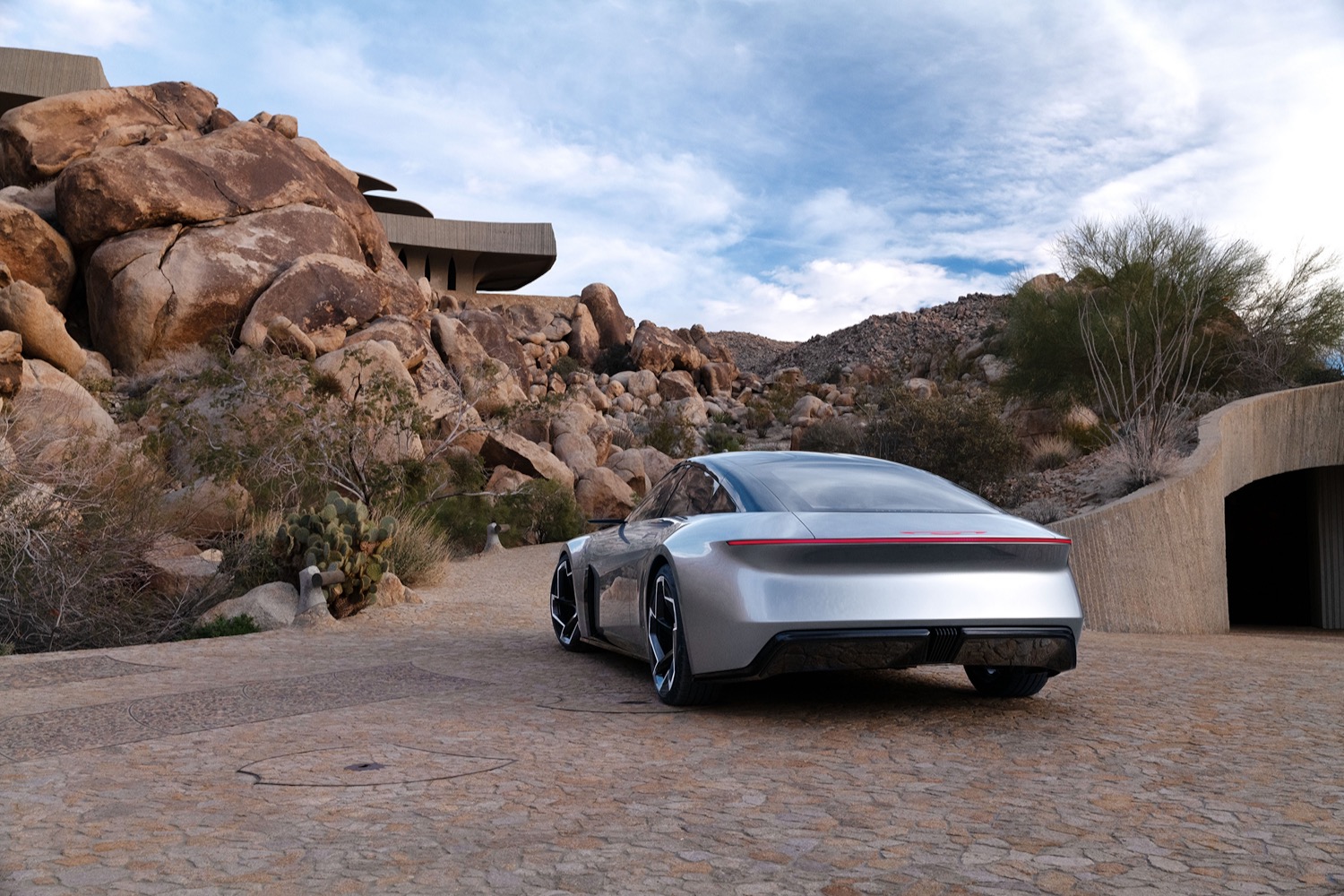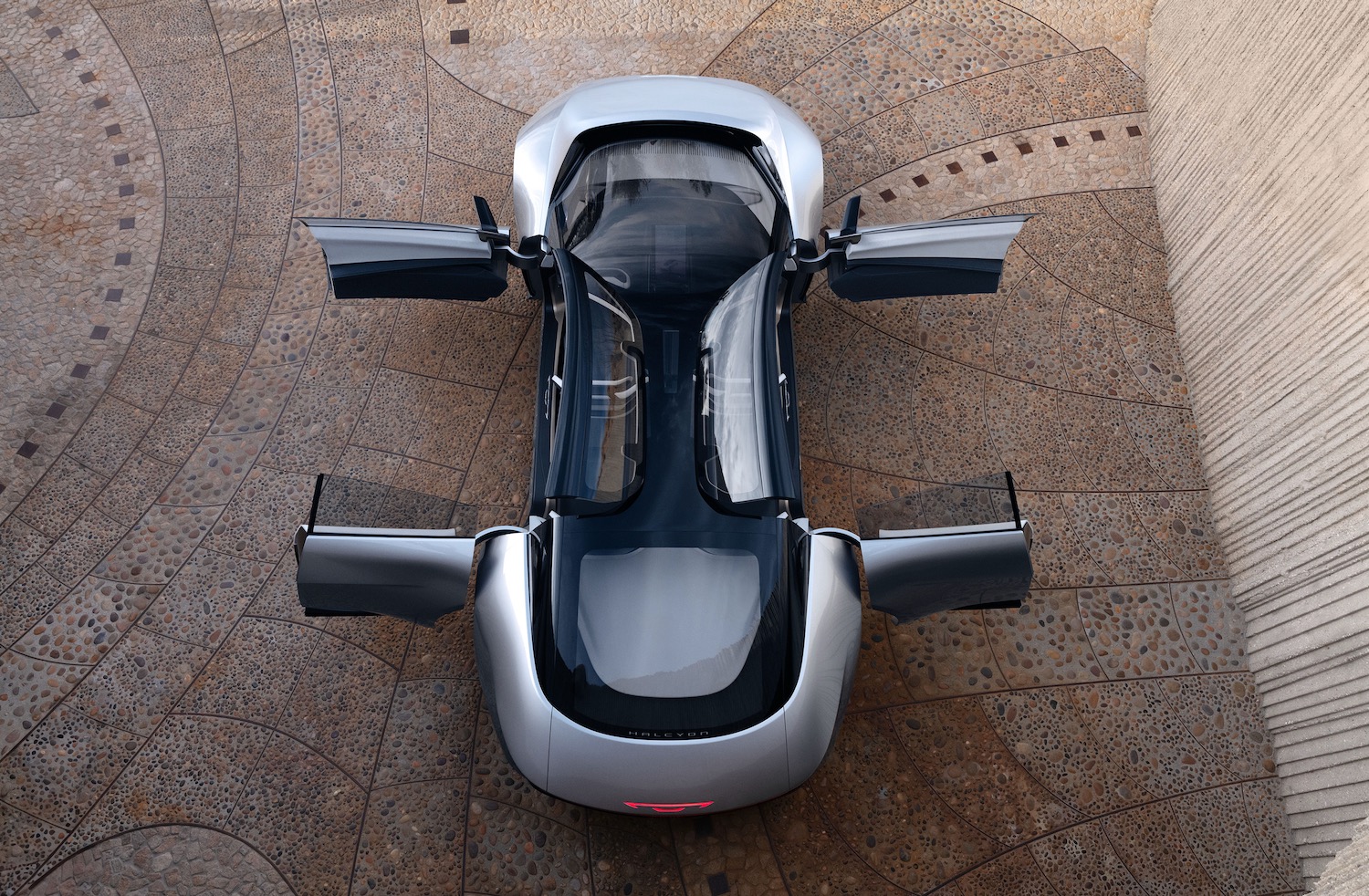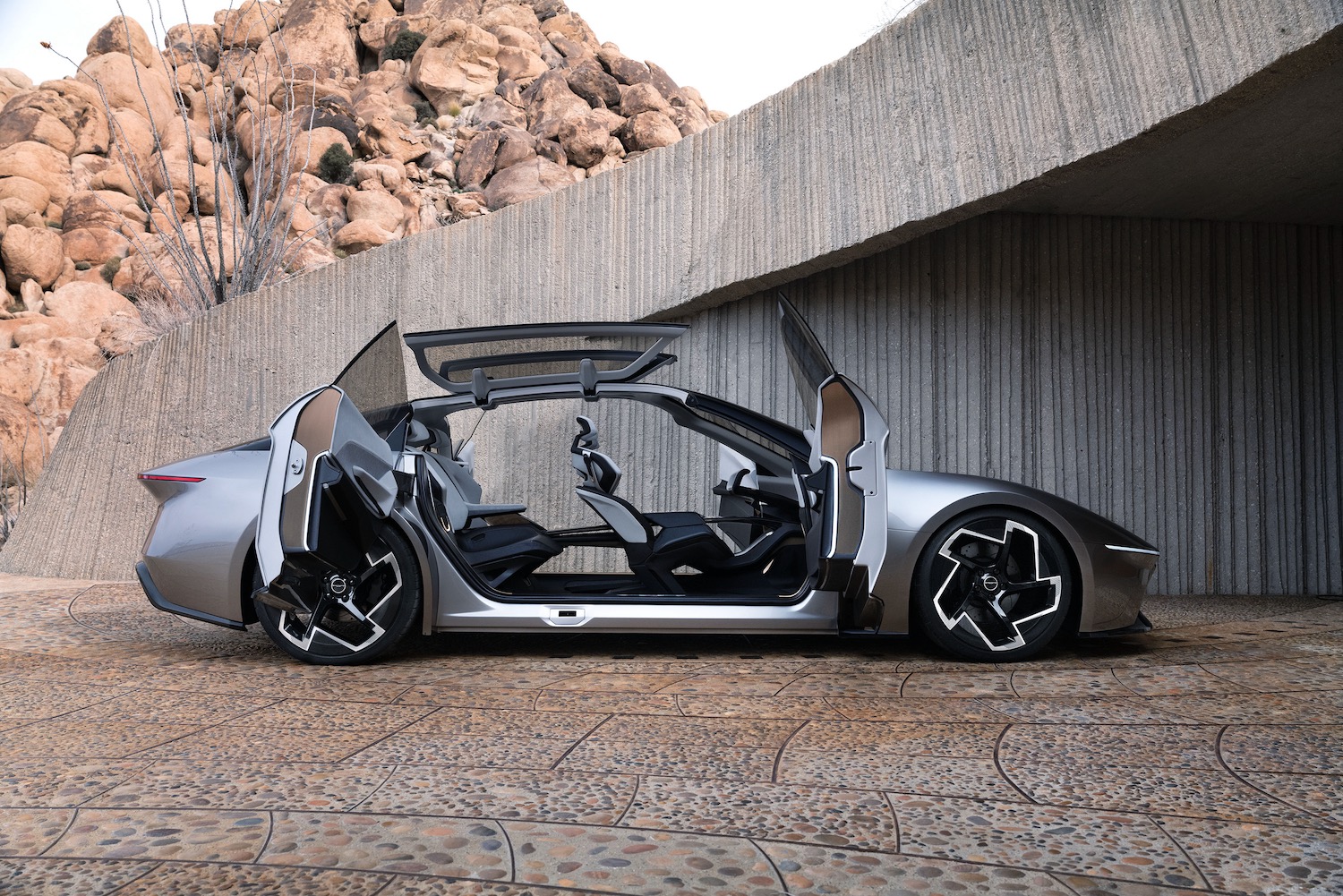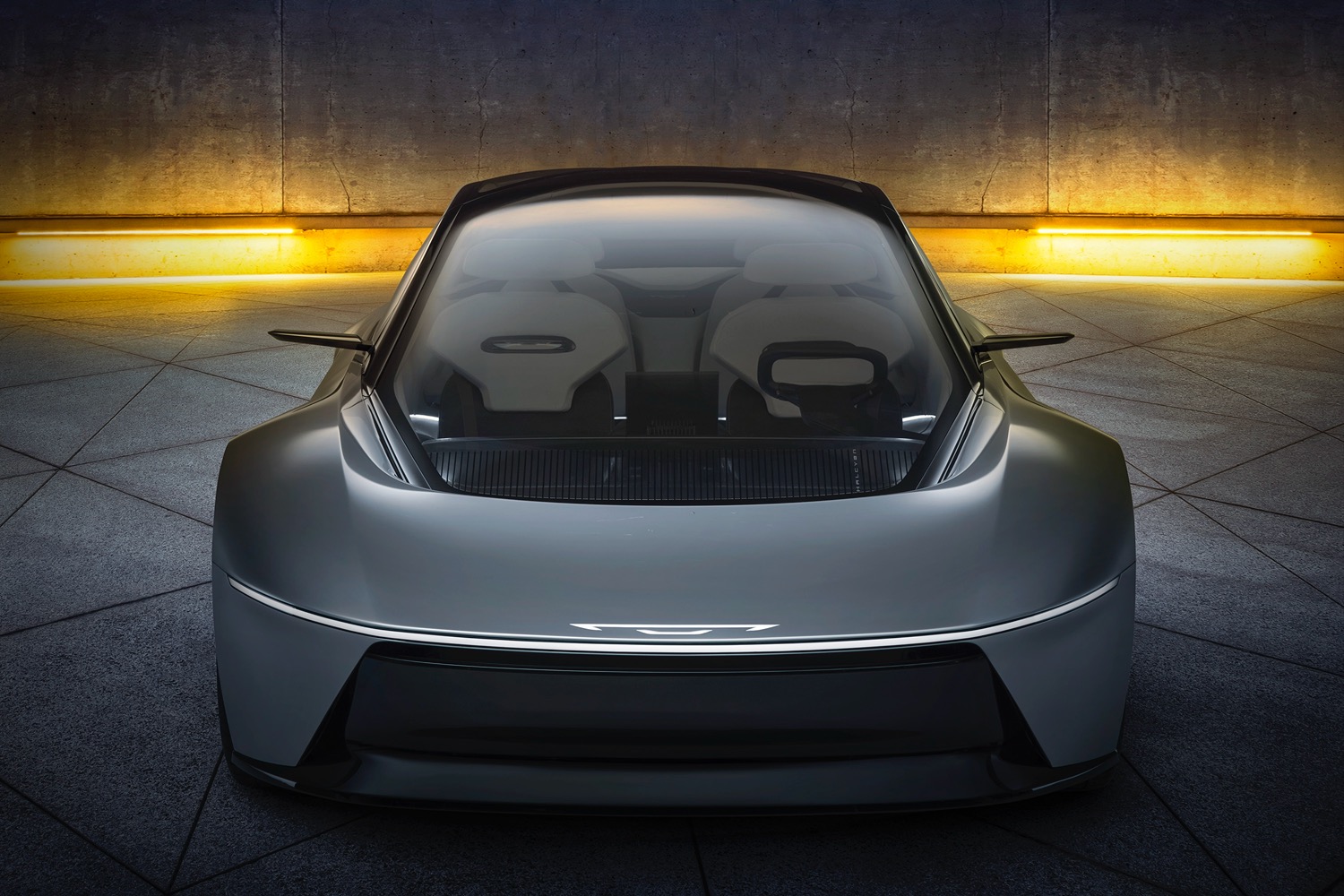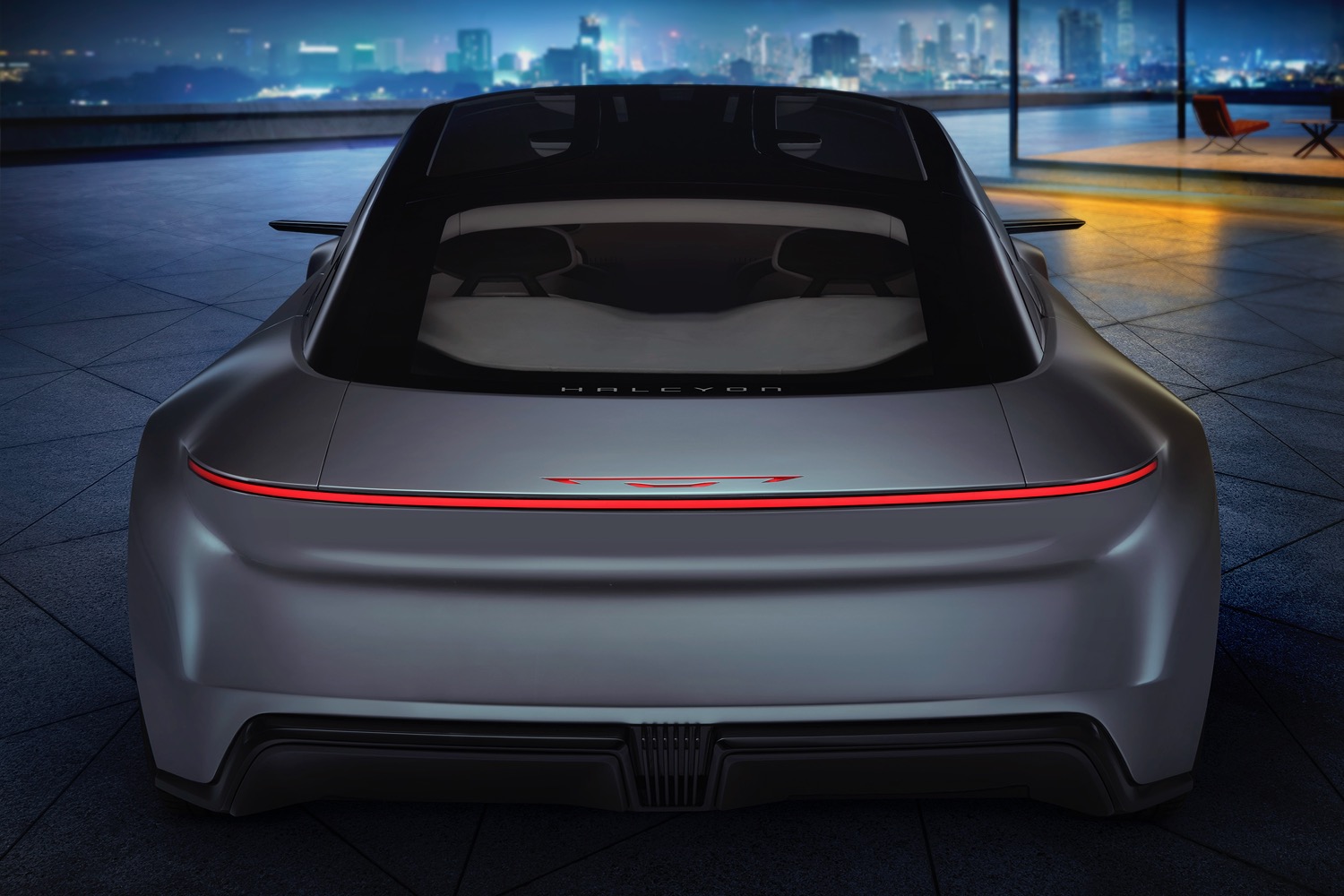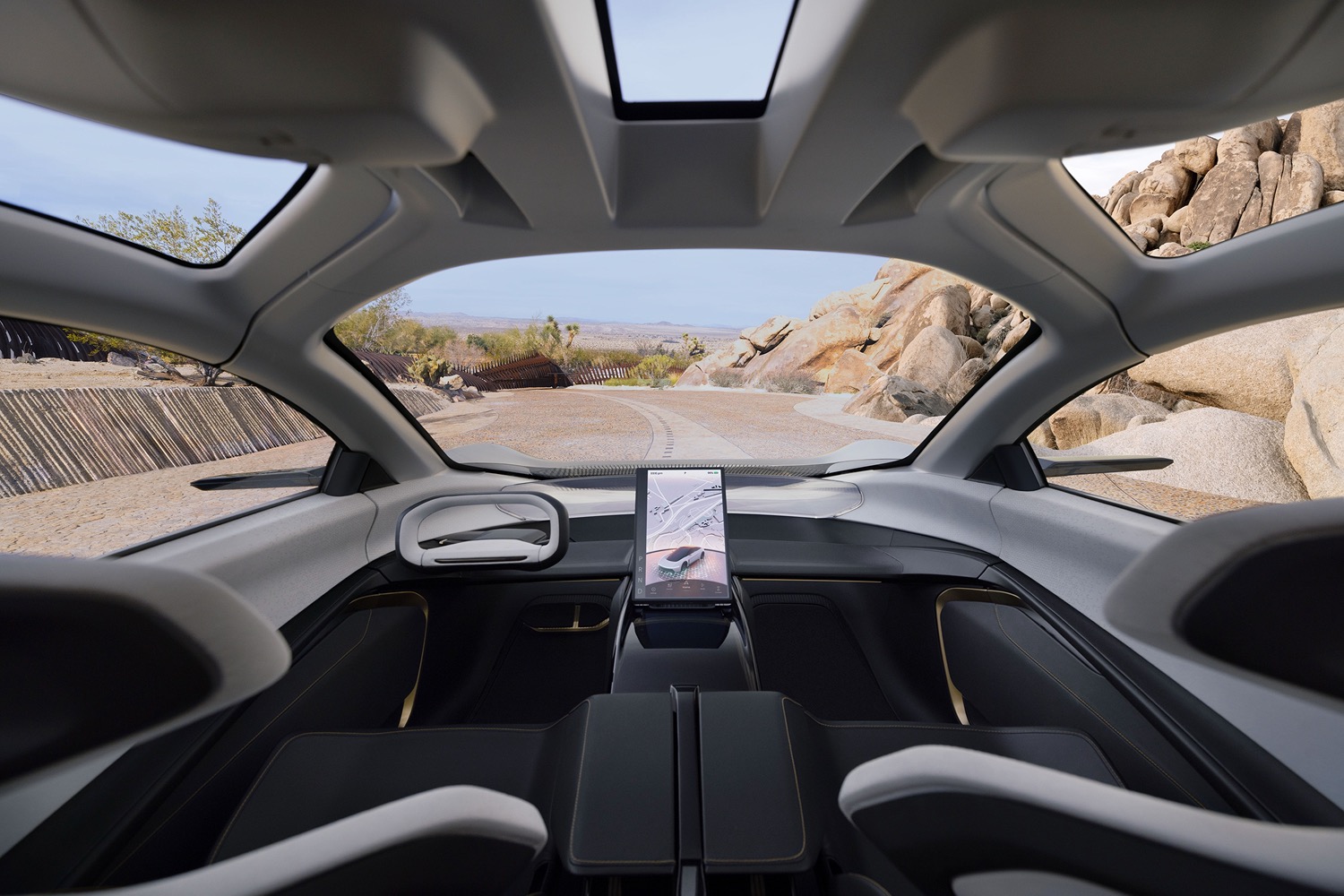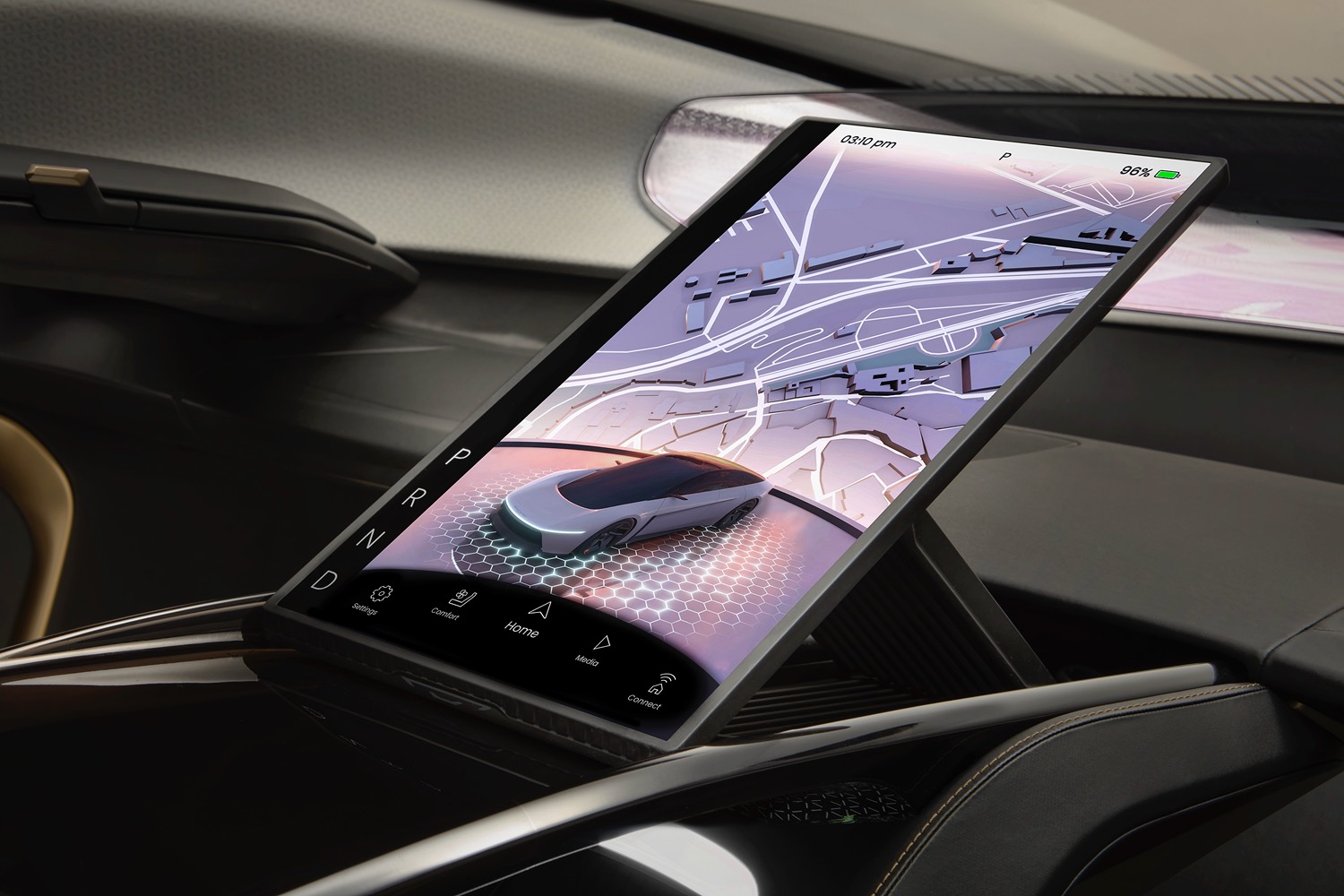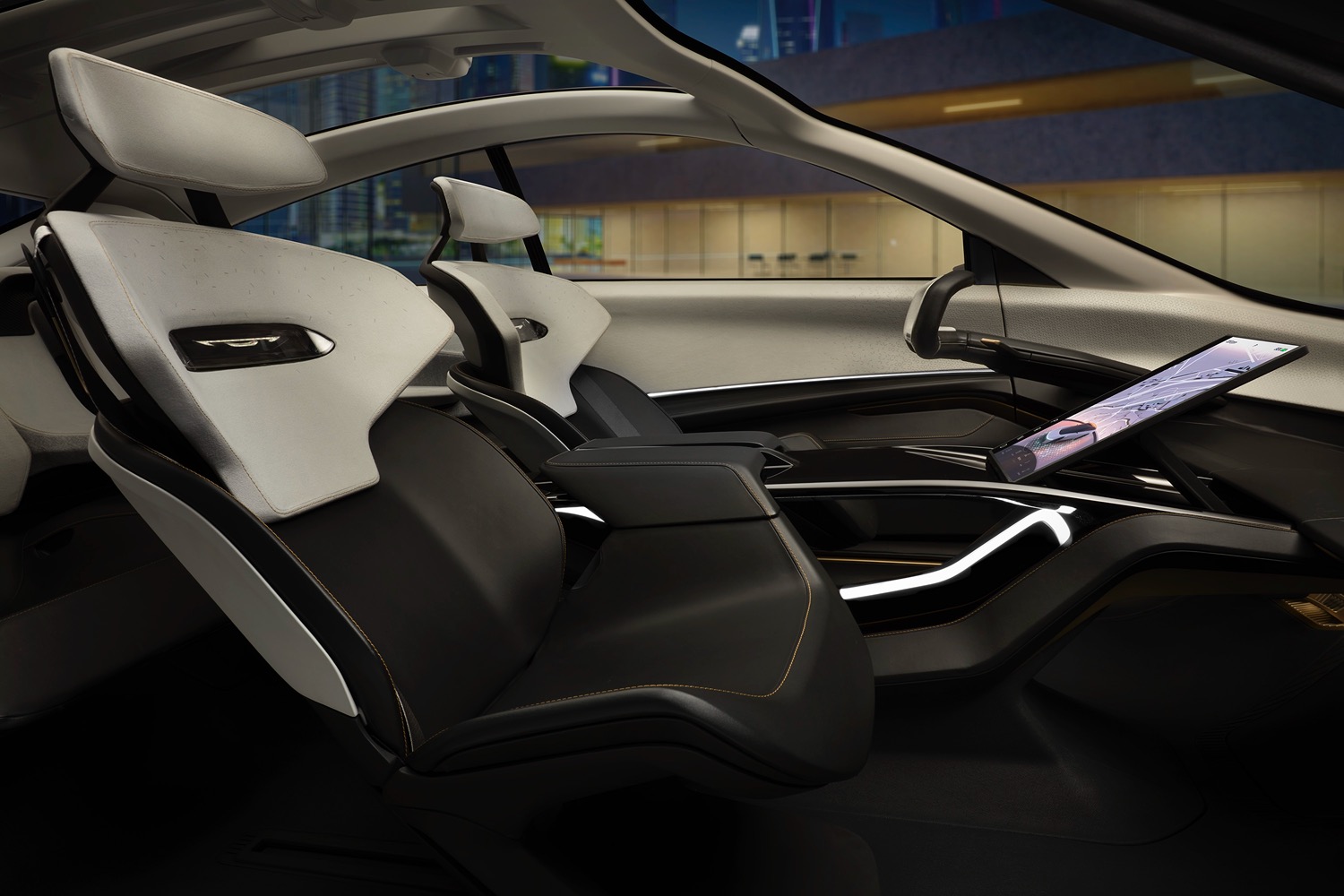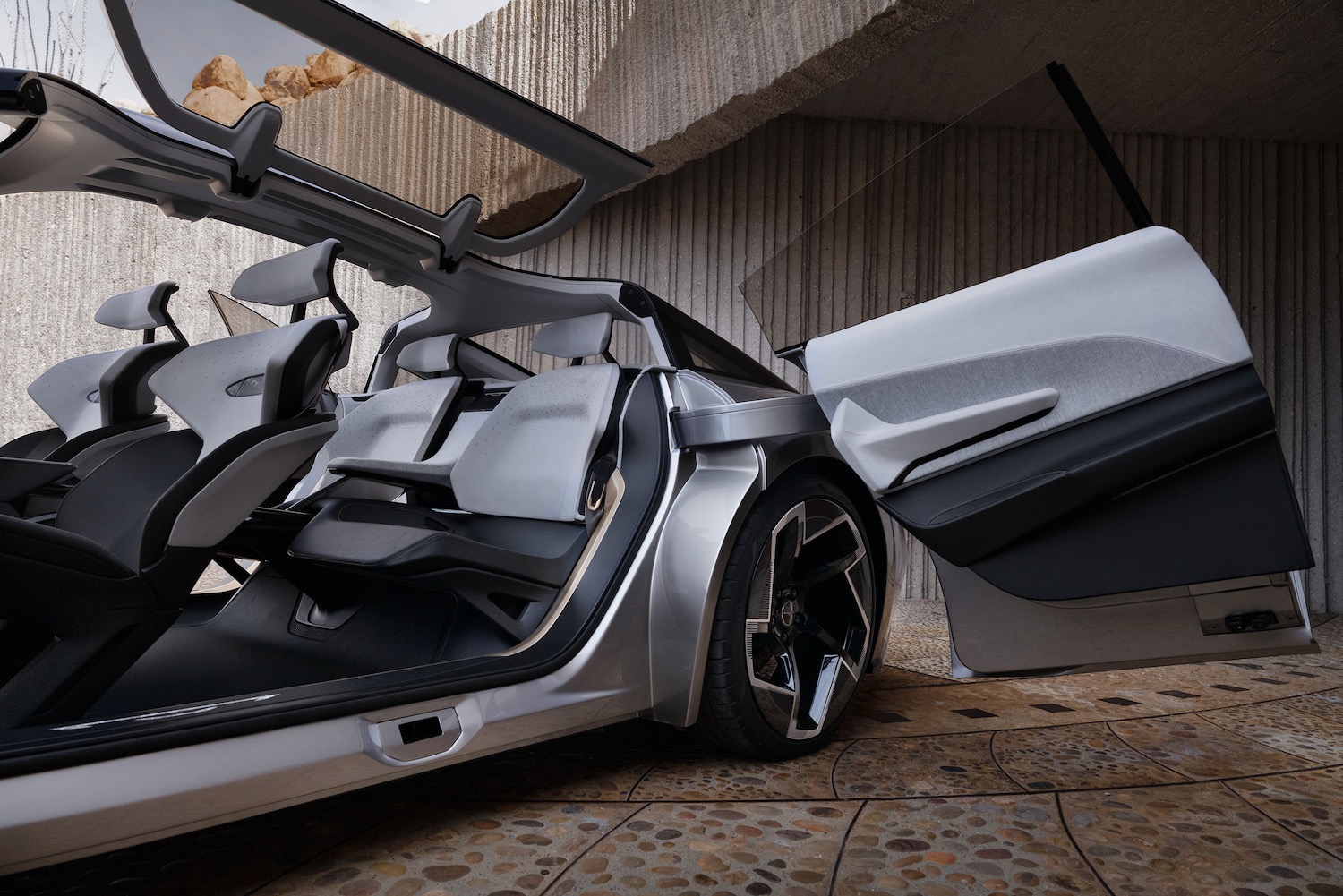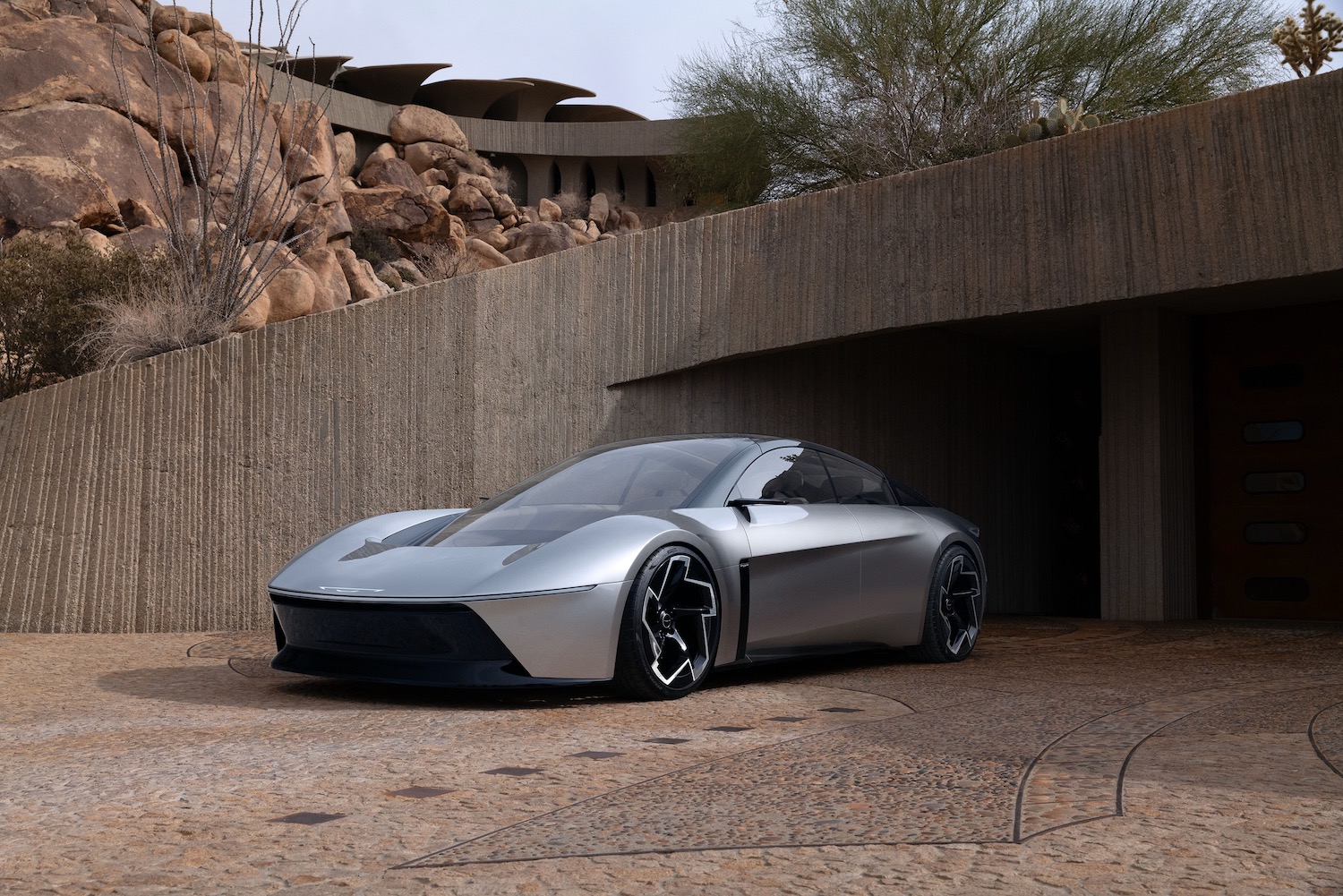
Chrysler plans to launch its first EV in 2025, but the foundational brand of automotive conglomerate Stellantis may be taking a detour on the road toward that goal. In 2022, Chrysler showed the Airflow, a concept car reportedly previewing that first production EV. But now the brand has a new EV concept dubbed the Halcyon.
Where the Airflow was a handsome but sensible crossover SUV, the Halcyon is a bit more fanciful. The low-slung four-door looks like Chrysler’s attempt to clone the Porsche Taycan. It’s even got front-fender air outlets like the Porsche, part of an aerodynamic package that includes a sliding rear diffuser and a rear spoiler. It’s all meant to minimize aerodynamic drag and improve range. An air suspension system can also adjust to further enhance efficiency, or improve driving dynamics, according to Chrysler.
Suicide doors combine with a canopy roof section to create a wide opening for ingress and egress. The curved windshield provides a panoramic view forward, but it also looks like it will cause front-seat occupants to fry in direct sunlight. The interior itself incorporates a claimed 95% sustainable materials, including suede upholstery made from 73% recycled plastic bottles, polyester trim made from 100% recycled fabric, and even Chrysler logos on the seats and steering wheel made from bits of recycled CDs.
The Halcyon was designed with autonomous driving in mind. The steering wheel and pedals retract when not needed, and the rear seats move back into the trunk area while the front seats slide back to take their place. Stellantis does not have a firm timeline for deploying self-driving cars, but Chrysler noted that the folding rear seats preview a potential future version of the Stow ‘n Go setup currently used in its minivans.
The infotainment system includes a dashboard-spanning transparent display, supplemented by a storable 15.6-inch portrait-oriented touchscreen that rests on a glass center console, as well as an augmented reality head-up display. Notable features include over-the-air (OTA) updates, a voice-activated digital assistant, predictive navigation, and the ability to watch movies or play video games while in autonomous driving mode.
The Halcyon is based on the STLA Large platform, which will also be used for the upcoming Jeep Wagoneer S electric SUV and a replacement for the Dodge Charger and Challenger that’s expected to get electric and gasoline powertrains. The concept features lithium-sulfur batteries that have a 60% lower carbon footprint than other EV batteries, Chrysler claims, and is designed for in-motion inductive charging. That would allow the car to charge while driving via hardware embedded in the roadway — assuming such infrastructure ever gets built.
Chrysler still claims it will launch its first EV in 2025 and is aiming for an all-electric lineup by 2028, but things are a bit murky. The automaker isn’t discussing production plans for the Halcyon, and in 2023, Motor Trend reported that CEO Christine Feuell had decided not to move ahead with a production EV based on the Airflow concept either.
No matter what form Chrysler’s first EV takes, 2025 can’t come soon enough. With the 300 sedan no longer in production, the Pacifica minivan is now Chrysler’s only model. It’s quite a fall for the brand that, through the acquisition of more profitable divisions like Dodge and Jeep, grew to become America’s third-largest automaker before being consumed via merger, first by Fiat Chrysler Automobiles (FCA) and then Stellantis. EVs are Chrysler’s only hope to regain relevance.
